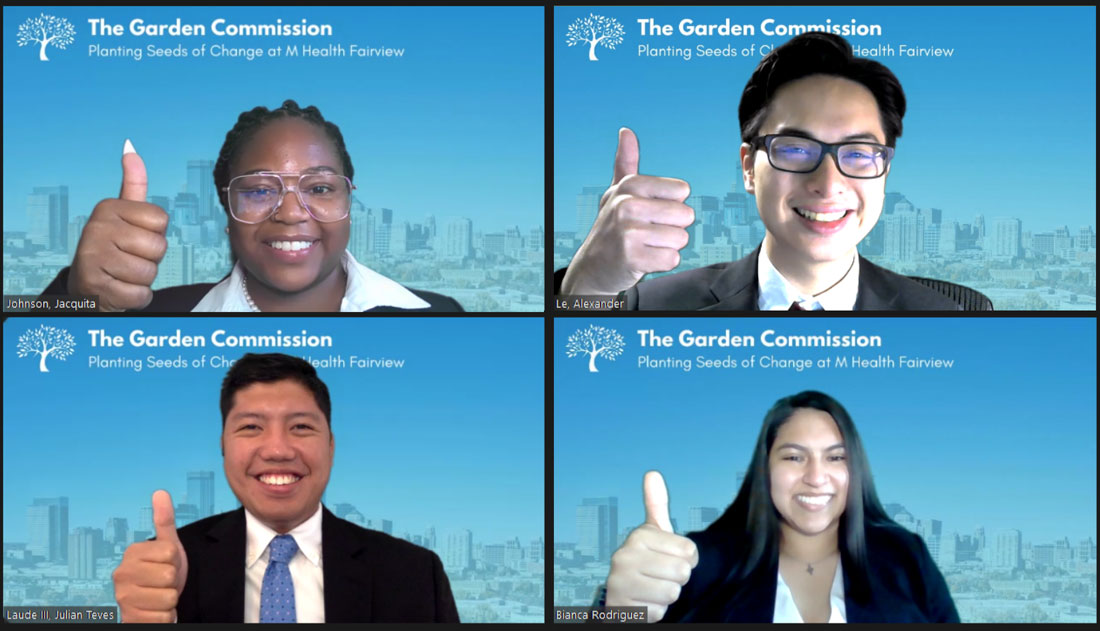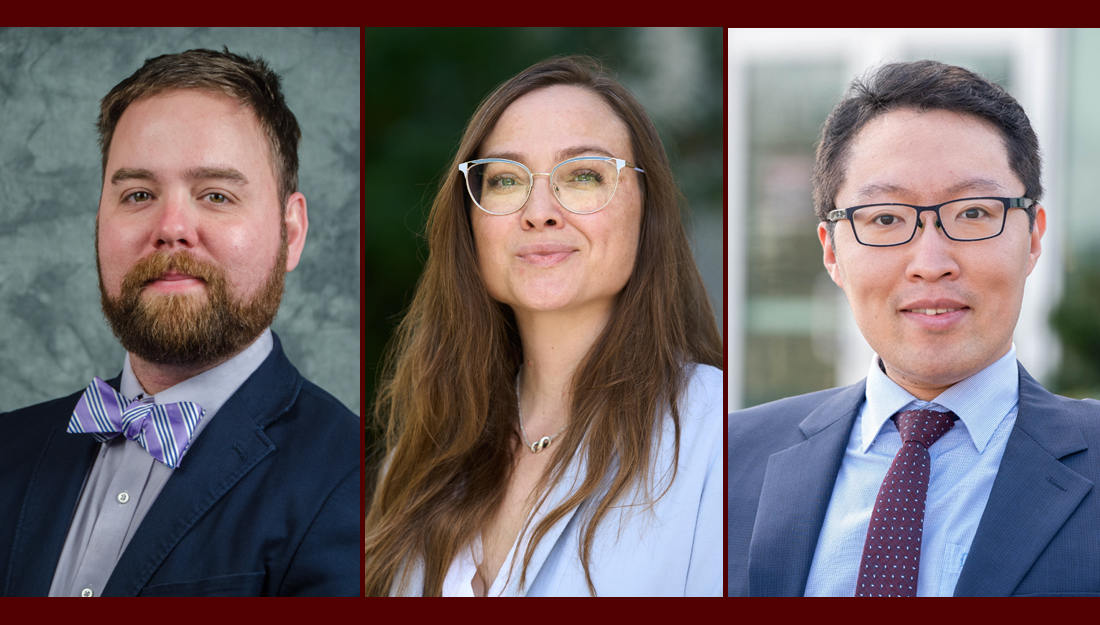- Lindsey Hendrix
- Medicine, Medicine Awards and Honors, Pharmacy, Public Health, Show on VR homepage
Texas A&M Health students finish in top 5 at national health care competition
An interprofessional team of health profession students went to the final round for their solution to health care worker burnout

A team of students from Texas A&M University Health Science Center (Texas A&M Health) finished in the top five at the 2022 CLARION National Interprofessional Case Competition hosted virtually by the University of Minnesota on April 8-9. Members of the team are Jacquita Johnson and Julian Laude from the School of Public Health, Alexander Le from the College of Medicine, and Bianca Rodriguez from the Irma Lerma Rangel College of Pharmacy.
The competition involves interprofessional teams of four students from at least two different health disciplines who are given a case and charged with creating a root cause analysis and devising an innovative solution. They have less than a month to prepare before presenting a 20-minute proposal to a panel of senior-level health executives that evaluates their analysis in the context of real-world standards of practice.
This year’s case was called “System of Belonging – Healthcare organizations & teams during the COVID-19 Pandemic.” It asked teams to address overwhelming stress and burnout experienced by health care workers during the COVID-19 pandemic, which has disproportionally affected those who identify as Black, Indigenous, and People of Color (BIPOC).
“I think as a team we did a good job in coming up with ideas that actually got to the root causes of these problems, and not just addressing them superficially,” Laude said.
The team’s project, which they named the T.R.E.E. Model (Towards Reaching Employee Empowerment), was designed around the concept of “planting a tree of radical belonging.” It is based on a theoretical concept by Camara Jones, MD, MPH, PhD, for understanding racism and an allegory she presents for it called “A Gardener’s Tale.” This allegory illustrates the relationship between the three levels of racism (institutionalized, personally mediated and internalized) in order to guide thinking about how to mitigate the impacts of racism on health. It essentially says that there are many seeds in a garden, and the gardener (the system) can choose to water (help) only specific seeds (groups of people).
The team took this framework and adapted it to employee burnout, choosing to take a three-level approach depicted as a tree. The roots address childcare by providing employees access to quality and affordable 24/7 care for their children. The trunk includes team huddles, team meetings and a well-being policy with the goal of decreasing stress and increasing team cohesion. The branches include a career pathways program for employee development and advancement up the career ladder.
“Burnout is a multifactorial problem that requires a multifactorial solution,” Johnson said. “By caring for our employees holistically, we humanize them and show them through actionable, equitable and sustainable initiatives, programs and policies, that they matter.”
“We all come from different backgrounds and so we were able to bring our lived experiences into making the case come alive, making it so we’re not just focusing on burnout as an abstract concept.” Le said. “Burnout impacts different groups disproportionately and so by us bringing our own separate backgrounds into it brought this synergy that I think otherwise would have made the project less full.”
Each member of the team contributed knowledge from their own educational background and conducted additional research to more fully understand the problem. In addition to reading scholarly articles on the topics of burnout and employee well-being, they met with experts in the field to learn more about how organizations are tackling these concepts.
“Burnout is something we will unfortunately experience in our lives eventually, whether it be ourselves or someone we know,” Rodriguez said. “My sister is a nurse who had first-hand experience from the pandemic, so this case was pretty special to me!”
This is the fifth year the Office of Interprofessional Education & Research at Texas A&M Health has sponsored a team to compete at the national CLARION competition. The office hosted a local competition in Bryan-College Station in March, and the winning team advanced to the national competition. The aim of the event is to enable students to achieve a 360-degree perspective on patient safety in today’s health care system and how it might be improved.
“This is the nation’s premier interprofessional case competition,” said the team’s coach, Gerard Carrino, PhD, MPH, a professor at the School of Public Health and a member of the Interprofessional Education Leadership Team at Texas A&M Health, which drives interprofessional education across the institution. “One of the things that distinguishes these top five teams from others is an authentic sense of interprofessionalism. You really can’t fake that, and this team came together beautifully and authentically relied on each other.”
The students agree and say the experience helped them develop concepts, presentation and collaboration skills that will serve them well in their future careers.
“I like to think about burnout like this: one shining star will burn out,” Le said. “But it’s a lot more beautiful, in my opinion, and sustainable to have a constellation of people all uplifting each other.”
Media contact: media@tamu.edu


